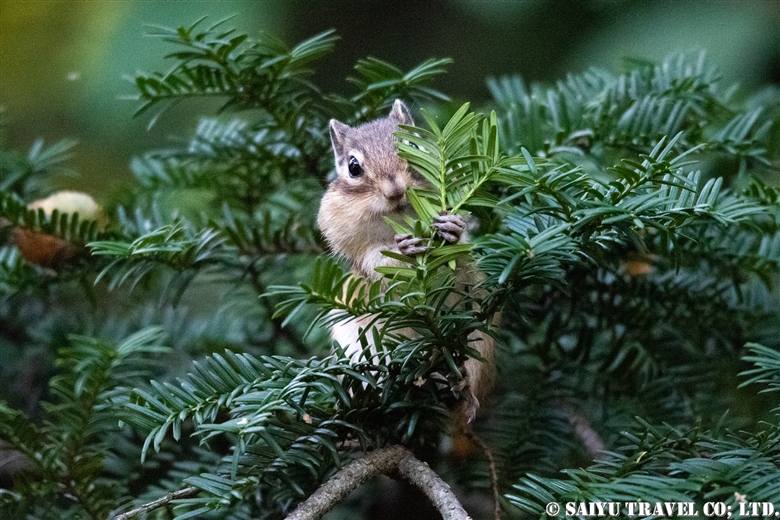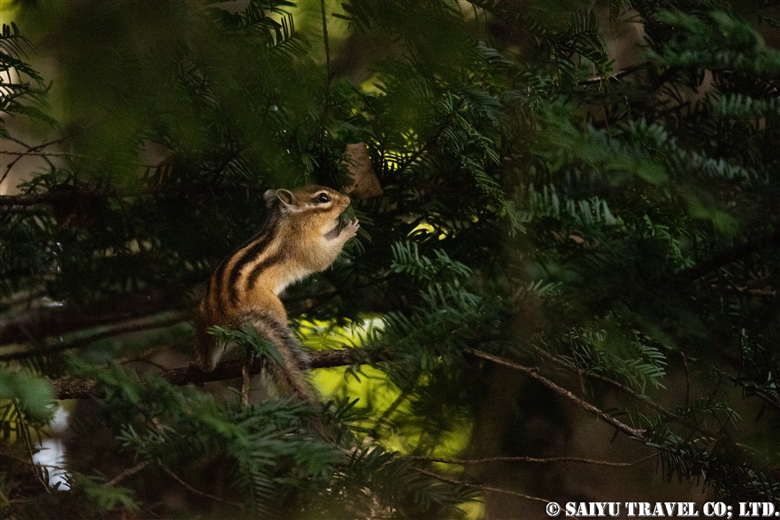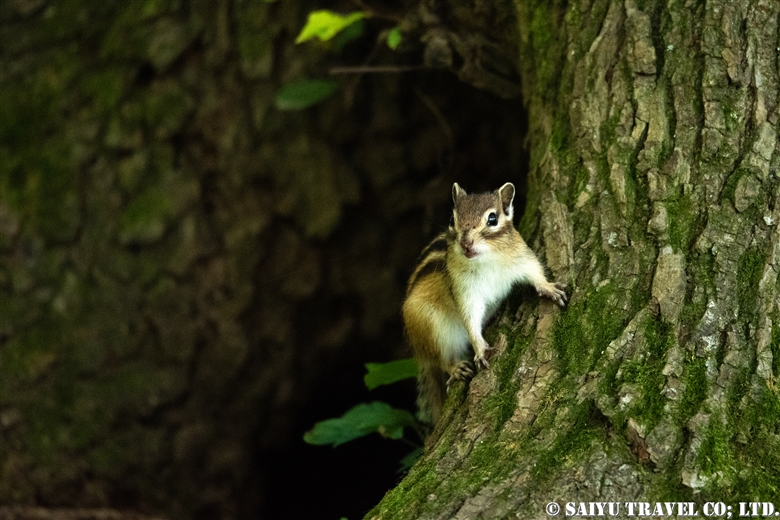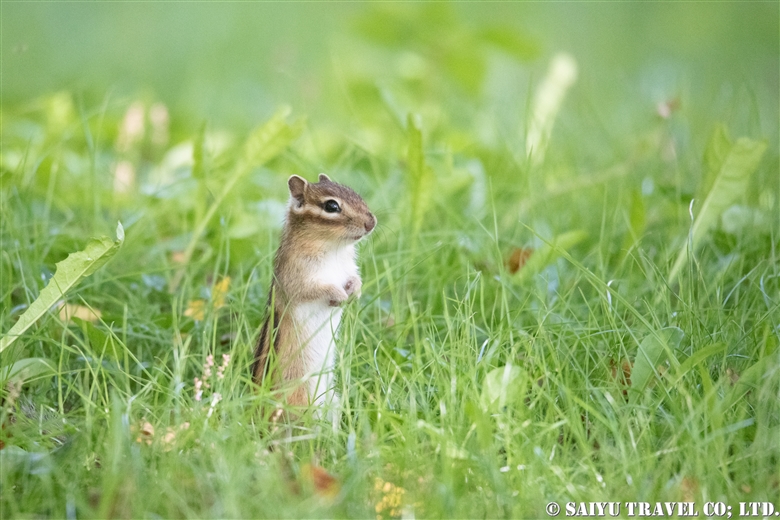
You might have a chance to encounter the small animals in the parks and shrines while vising the Eastern Hokkaido area.
Among them are the chipmunks, which hibernate through the winter. They will use the entire park in the autumn months to collect food for their winter storage. They may carry many kinds of food back to their nests such as yew nuts, walnuts, acorns, and mushrooms.
The Ezo Chipmunk, Tamias sibiricus lineatus, is a subspecies of chipmunk that is distributed throughout Hokkaido, its surrounding islands, and the islands of the Northern Territories.

Its body is about 15 centimeters long, a similar size as a mouse; and its footsteps are hard to hear, so it is often not noticed. Hokkaido is home to two small species: the Ezo squirrels and the Ezo chipmunks. The biggest difference is that Ezo chipmunks hibernate, but Ezo squirrels do not hibernate.

Ezo squirrels build their nests at the tops of tall trees, and basically live in the canopy. Ezo chipmunks, on the other hand, build burrows at the base of trees and hibernate, so their home range is largely on the ground level.

Ezo squirrels are also longer than Ezo chipmunks, with the squirrel’s tail alone, measuring about 15 centimeters.
Ezo squirrels can be observed throughout the year, but the Ezo chipmunks are easier to find from September to October, which is the busy pre-hibernation feeding season for them.
Photography & text: Shohei Morita
Observation: Sep 2022, Eastern Hokkaido Region
*Contact us, Saiyu Travel for more information about wildlife and bird watching in Hokkaido. We can make various arrangements for your trip. We have a guesthouse, Shiretoko Serai, in Rausu, Shiretoko Peninsula.
Tags: Wildlife in Hokkaido, Ezo Chipmunks, Chipmunks, Hokkaido blog, Ezo squirrels, Wildlife of Hokkaido, Tamias sibiricus lineatus, Wildlife of Japan, Wildlife Photography tour in Japan, Wildlife tour in Japan, Widlife in Japan



